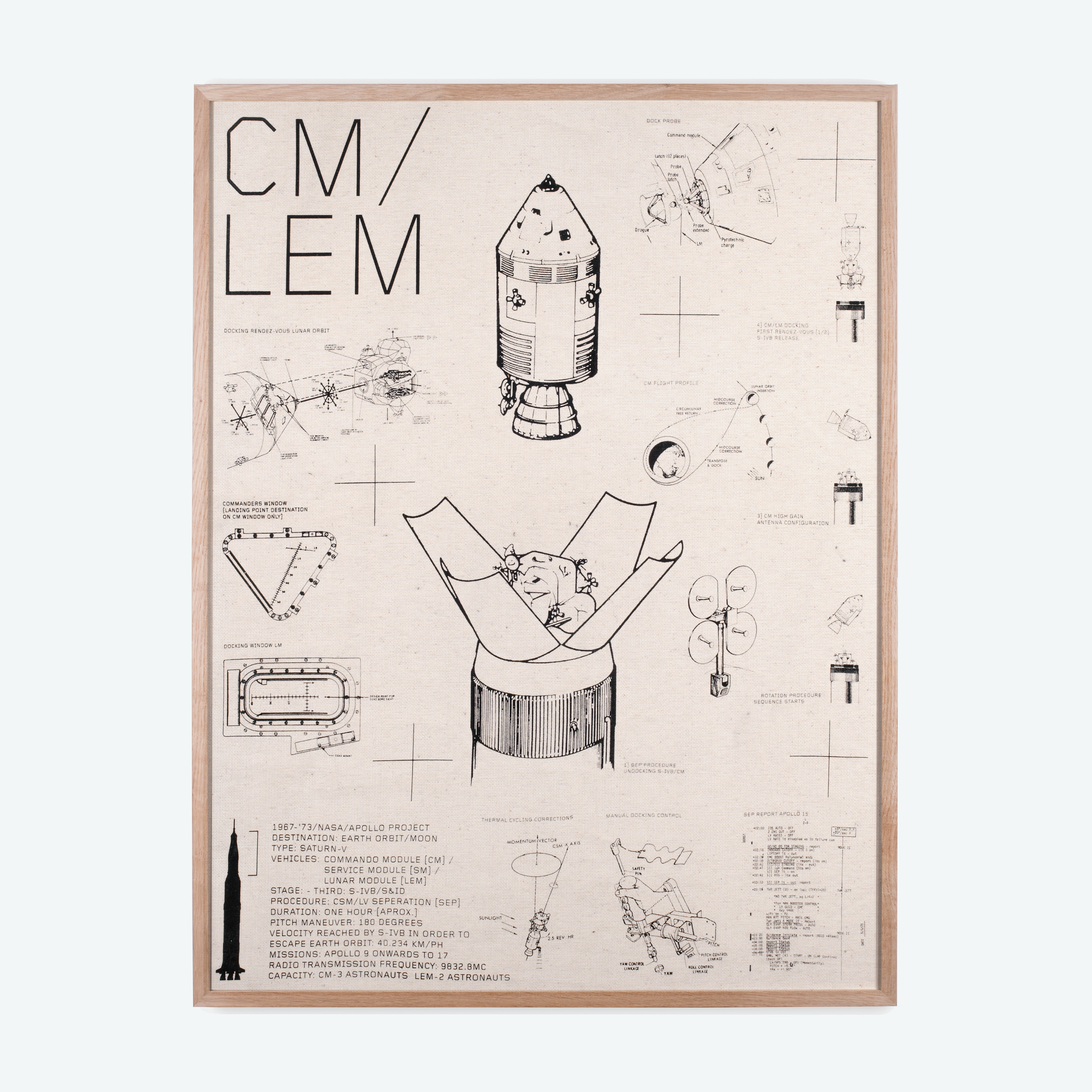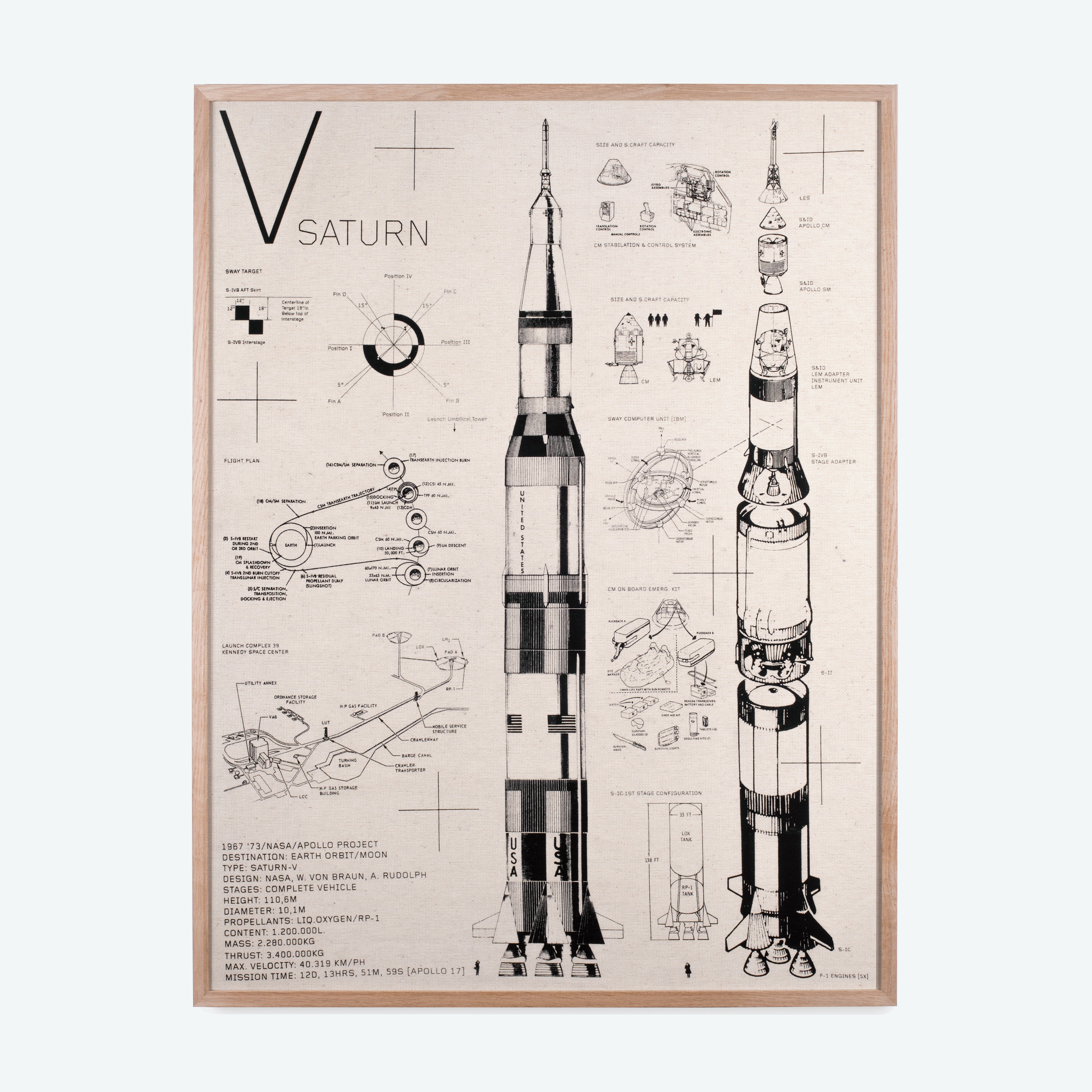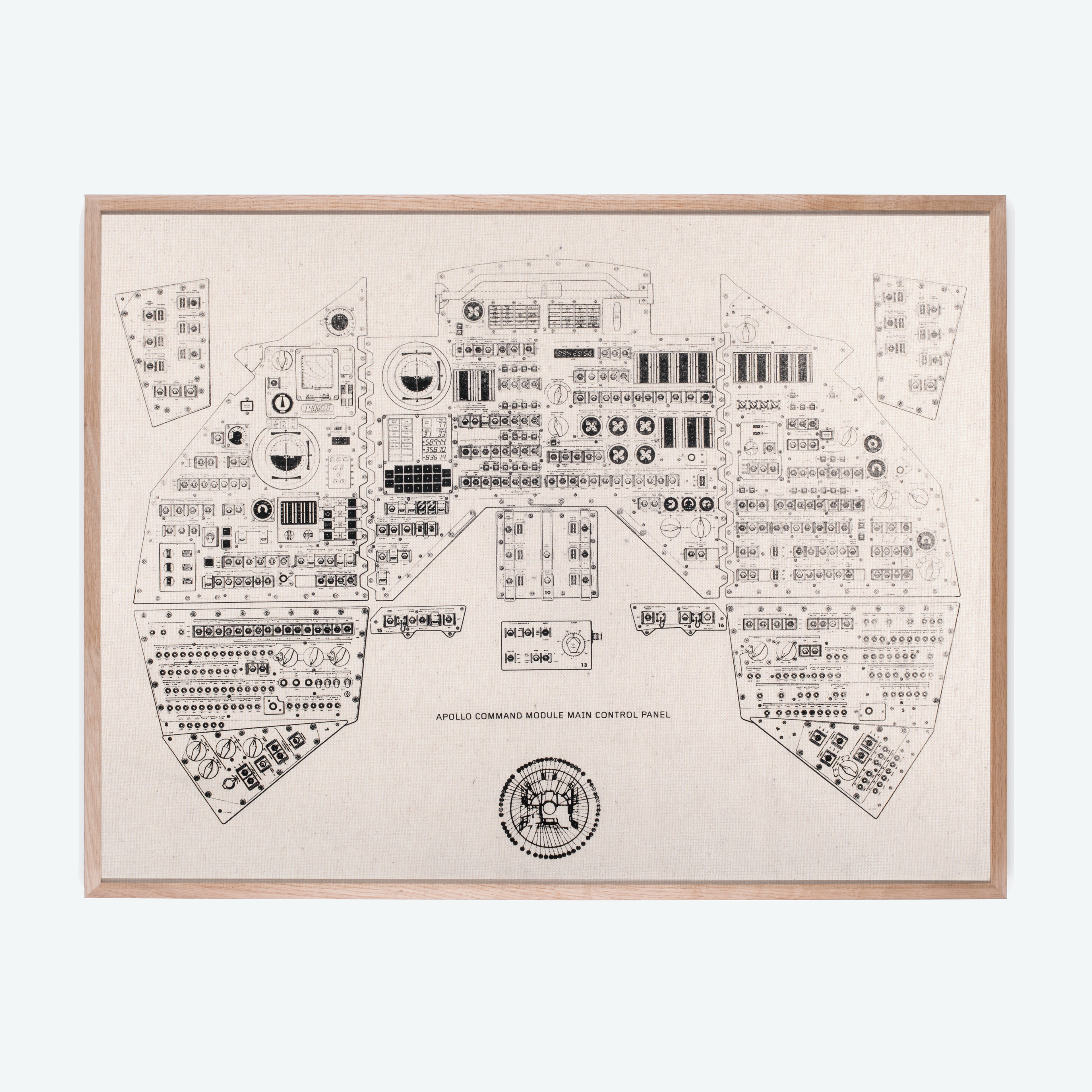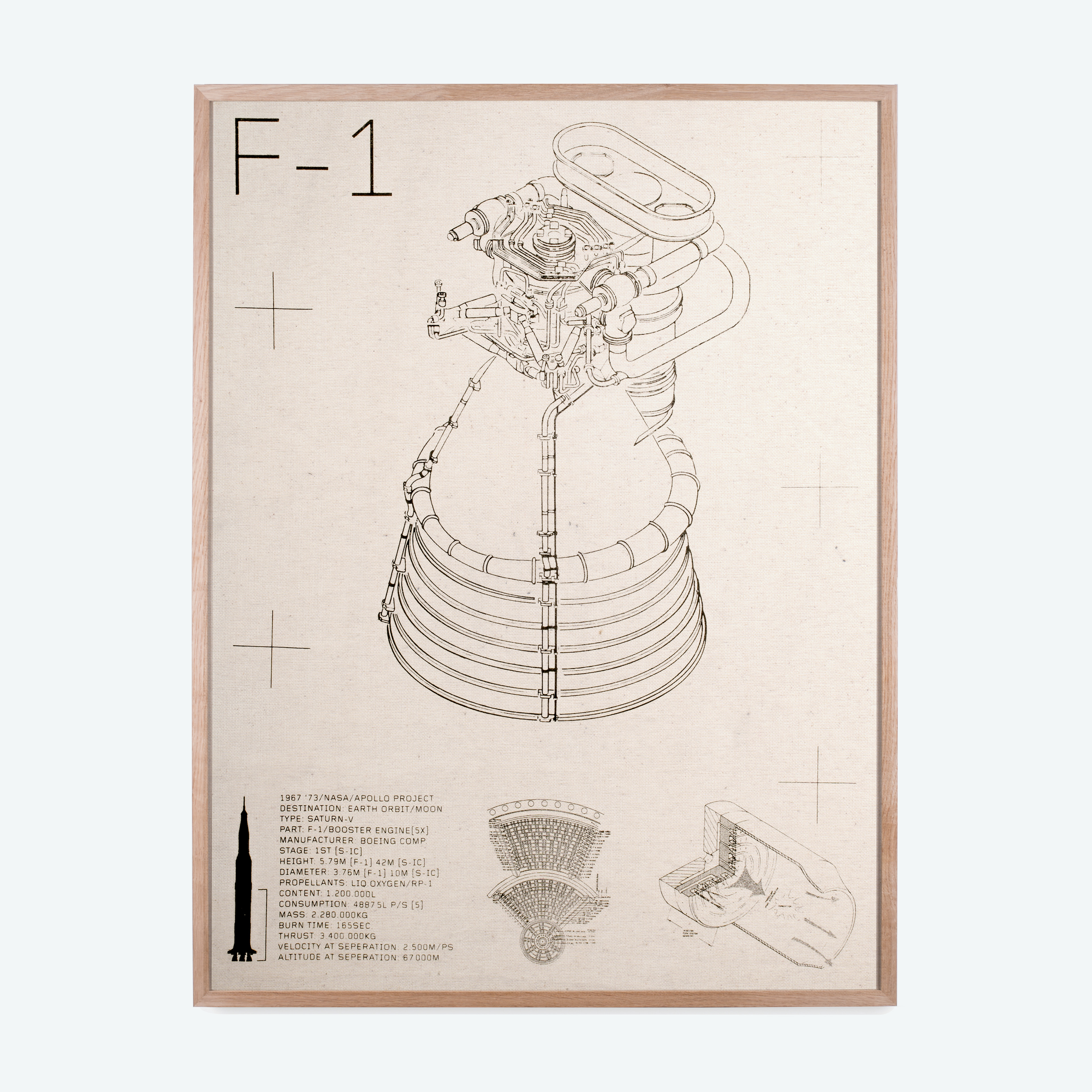Saturn V Moon Rocket
• Handprinted silkscreens on unbleached cotton
• Framed in solid oak and glass
• 85 x 65 cm
"The idea started with a small question; can we commit ourselves to land a man on the moon and to return him back home safely?
Within a decade (1969) this goal was achieved by a multi-staged rocket designed to carry three persons holding two separate spacecrafts: one commando service module to control the journey to the moon and back to earth, and a separate lunar lander caring two astronauts for the moon orbit rendezvous.
Little was known about this astronomical body before the Apollo program initiated, nor the technical capacities were suitable for the task at the time.
Nasa employed over 400,000 people to research, engineer, invent, calculate, manage, test, and execute the development of the program. Eventually, six successful Apollo missions made it possible for twelve astronauts to walk the moon. Each visit was short: for only a few hours each, they occupied themselves doing experiments, taking photos, and collecting moon rock.
Nasa employed over 400,000 people to research, engineer, invent, calculate, manage, test, and execute the development of the program. Eventually, six successful Apollo missions made it possible for twelve astronauts to walk the moon. Each visit was short: for only a few hours each, they occupied themselves doing experiments, taking photos, and collecting moon rock.
Small questions can resolve into vast complex processes followed up by just a few conclusive drawings in order to explain what, how, and why things are decided.
To me that reflects how beautifully connected human minds, are capable to communicate, organize and operate in order to achieve goals. True leadership depicts best how to reason, will, and common necessities are formulated by those that lead an entire generation. Ideas present themselves before opportunity.
Today science made quite a leap from what space has offered us. But can we still allow ourselves a small and perhaps almost inconceivable question yet again? Whenever we look down from space to our one and only home, what is a pivotal challenge today that urgently needs answering before mankind can take the next step forward?"




